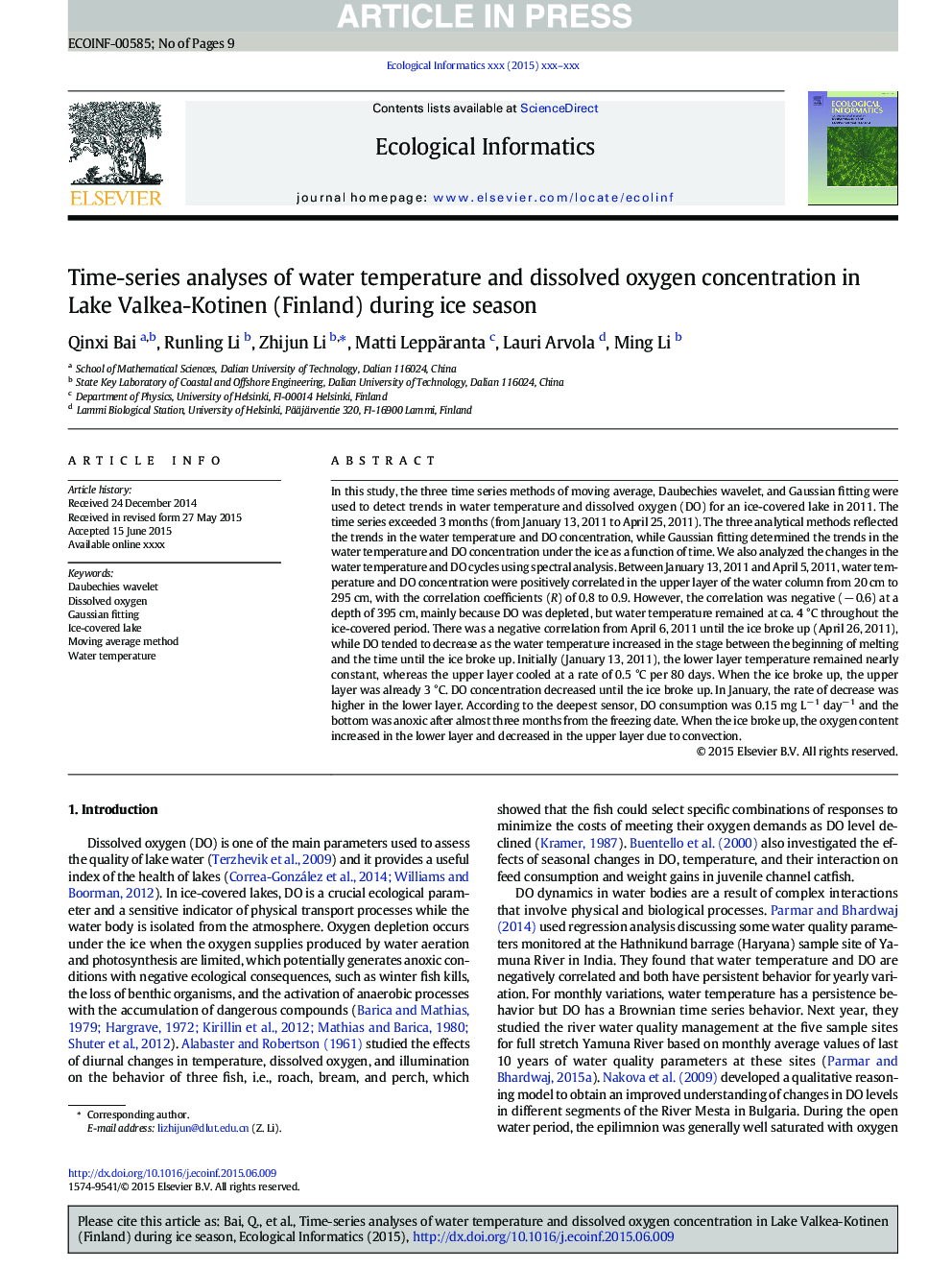| Article ID | Journal | Published Year | Pages | File Type |
|---|---|---|---|---|
| 8845936 | Ecological Informatics | 2016 | 9 Pages |
Abstract
In this study, the three time series methods of moving average, Daubechies wavelet, and Gaussian fitting were used to detect trends in water temperature and dissolved oxygen (DO) for an ice-covered lake in 2011. The time series exceeded 3 months (from January 13, 2011 to April 25, 2011). The three analytical methods reflected the trends in the water temperature and DO concentration, while Gaussian fitting determined the trends in the water temperature and DO concentration under the ice as a function of time. We also analyzed the changes in the water temperature and DO cycles using spectral analysis. Between January 13, 2011 and April 5, 2011, water temperature and DO concentration were positively correlated in the upper layer of the water column from 20 cm to 295 cm, with the correlation coefficients (R) of 0.8 to 0.9. However, the correlation was negative (â 0.6) at a depth of 395 cm, mainly because DO was depleted, but water temperature remained at ca. 4 °C throughout the ice-covered period. There was a negative correlation from April 6, 2011 until the ice broke up (April 26, 2011), while DO tended to decrease as the water temperature increased in the stage between the beginning of melting and the time until the ice broke up. Initially (January 13, 2011), the lower layer temperature remained nearly constant, whereas the upper layer cooled at a rate of 0.5 °C per 80 days. When the ice broke up, the upper layer was already 3 °C. DO concentration decreased until the ice broke up. In January, the rate of decrease was higher in the lower layer. According to the deepest sensor, DO consumption was 0.15 mg Lâ 1 dayâ 1 and the bottom was anoxic after almost three months from the freezing date. When the ice broke up, the oxygen content increased in the lower layer and decreased in the upper layer due to convection.
Related Topics
Life Sciences
Agricultural and Biological Sciences
Ecology, Evolution, Behavior and Systematics
Authors
Qinxi Bai, Runling Li, Zhijun Li, Matti Leppäranta, Lauri Arvola, Ming Li,
